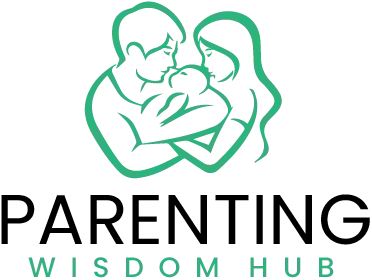Introduction
One in seven children in the United States has reportedly been the victim of physical abuse or neglect in the past year. This is a shocking number that highlights how widespread child abuse is.
It’s important to understand physical abuse in children because it has long-lasting effects on their physical, social, and mental health. Finding and treating children with these problems early on can greatly lessen their effects, allowing them to heal and do well.
This blog informs parents, caregivers, and educators on child physical abuse signs, consequences, and prevention. After reading this article, readers will be able to spot abuse, understand its serious implications, and prevent and address it.
What is Physical Abuse?
Physical abuse is any intentional harm done to a child’s body by a parent, caretaker, or other person. This includes actions that hurt people physically and make it very likely that someone will get hurt.
Examples of Physical Abuse
- Hitting: Hitting a child with a fist, hand, or something else, like a belt or stick, and breaking, cutting, or bruising them. Hitting someone repeatedly can cause serious injuries and long-term stress.
- Slapping: Hit a child in the face, head, or body with an open hand, leaving red marks or bruises behind. Slapping a child can hurt them a lot and make them afraid, which can make them feel less safe.
- Burning: Using hot things like cigarettes, irons, or boiling water to cause burns. This can cause serious damage to the skin, including scars, infections, a lot of pain, and mental suffering.
- Shaking: Shaking a baby or young child hard can hurt their brain, cause bleeding, or even kill them. Babies are especially at risk when shaken because their brains and neck muscles are weak.
- Kicking: Hitting a child hard with your foot can lead to internal injuries, broken bones, and cuts. Kicking can do a lot of damage to your body and have long-lasting effects on your mental health.
- Choking: Applying neck pressure can cause unconsciousness or death by restricting brain circulation and airflow. Choking is a serious abuse with acute repercussions.
- Biting: Using your teeth to hurt a child’s skin and leave scars, bruises, or broken skin behind. Biting hurts and can lead to infections and mental problems that last for a long time.
- Throwing: Forcefully pushing a child against a wall, floor, or other hard surface can cause brain injuries, fractured bones, and other catastrophic injuries. Throwing a child is aggressive and harms them.
Signs and Symptoms of Physical Abuse
Physical Indicators
- Unexplained Bruises: Bruises that heal at different speeds should be a cause for concern, especially in odd places like the back, buttocks, or thighs.
- Fractures: Broken bones that are unusual for the child’s age or amount of activity, like spiral fractures from twisting.
- Burns: Burns that look like hot items or chemicals, like cigarette burns around the lungs, cause patterns.
- Cuts and Scratches: Unknown or frequent cuts, scratches, or scrapes, usually on clothes-covered areas.
- Bite Marks: Their unique pattern can identify marks on the skin that look like bites from people.
- Head Injuries: Head injuries that show up as swelling, bruises, or hair loss that can’t be explained.
Behavioral Indicators
- Changes in Behavior: Behavior changes suddenly, like withdrawing, getting nervous, or becoming too angry.
- Fearfulness: Being scared around certain people or not wanting to go home.
- Aggression: Aggressive behavior toward others, animals, or things for no clear reason.
- Withdrawal: Social withdrawal or a clear drop in the number of activities you do.
- School Performance: A sudden drop in school achievement or not wanting to attend school.
- Clothing: For example, big sleeves in the summer are not the right thing to wear to hide injuries.
Emotional Indicators
- Anxiety: Persistent anxiety or excessive worry, often without a clear cause.
- Depression: Signs of depression include feeling sad all the time, crying for no reason, or not wanting to do anything.
- Low Self-Esteem: Expressing thoughts of worthlessness or undeserving of love and care.
- Guilt and Shame: Feeling a lot of guilt or shame because they think the abuse is their fault.
- Difficulty Forming Relationships: Not able to make or keep healthy connections with adults or friends.
- Self-Harm: Participating in self-injurious actions, such as making cuts or scratches on their bodies.
Impact of Physical Abuse on Children
Short-term Effects
- Physical Injuries: Physical injuries like cuts, bruises, broken bones, and burns can hurt immediately and require medical care.
- Emotional Distress: Strong emotions like fear, anxiety, and sadness right after being abused affect the child’s daily life and health.
- Behavioral Issues: Mood changes right away, such as becoming angry, withdrawing, or having trouble focusing, can affect how well you do in school and with other people.
Long-term Effects
- Chronic Health Problems: Physical stress can cause long-lasting health problems, such as chronic pain, digestive problems, and neurological issues.
- Mental Health Issues: Chronic mental health conditions such as depression, anxiety, post-traumatic stress disorder (PTSD), and substance abuse.
- Difficulties in Relationships: Establishing and sustaining good relationships can be difficult due to trust concerns, apprehension about intimacy, and emotional detachment.
- Low Self-Esteem: Continual emotions of insignificance and diminished self-regard impact personal and occupational spheres.
- Educational and Employment Challenges: The enduring psychological and emotional consequences of abuse might hinder academic performance and make it challenging to sustain steady work.
- Risky Behaviors: Increased risky behavior, such as substance misuse, self-harm, or crime, to cope with trauma.
Causes and Risk Factors
Parental Factors
- Substance Abuse: Parents or caregivers who abuse drugs or alcohol are more likely to be violent because they lose their temper and can’t make good decisions.
- Mental Health Issues: Parents with untreated depression, anxiety, or personality problems may struggle to provide a safe and caring environment for their children.
- History of Being Abused: Abused adults are more likely to abuse their children.
Environmental Factors
- Poverty: Economic stress and a lack of resources might raise the risk of physical abuse because parents may struggle to cope.
- Domestic Violence: Children in domestic violence homes are more likely to be physically harmed or witness abuse, which can have similar negative impacts.
- Lack of Social Support: Families that don’t have a lot of friends, family, or community tools to help them are more likely to be abused.
Prevention and Intervention Strategies
Parental Education
- Parenting Classes: Parents can learn effective, nonviolent ways to control and raise their children by taking parenting classes. This lowers the risk of physical abuse.
- Stress Management Techniques: The pressures of parenthood can be managed without abuse by teaching parents stress management strategies, including mindfulness, exercise, and relaxation.
Community Support
- Community Resources: Community supports like childcare, food banks, and housing help reduce stress that leads to physical abuse.
- Social Services: Social services can help families with therapy, finances, and other support to lessen their risk of abuse.
- Support Groups: Parent support groups provide camaraderie, shared experiences, and practical guidance, making parents feel less isolated and more equipped to handle parenting issues.
Legal Measures
- Reporting Abuse: Encouraging people who think they are being abused to tell the police can help make sure that children get the help and safety they need.
- Protective Orders: Protective orders and other legal steps can help keep abusers away from children and make the world a safer place.
- Child Protective Services Involvement: Child protective services can look into claims of abuse, help children, and keep an eye on families to make sure kids are safe and healthy.
These preventative and intervention measures can help us protect children from physical abuse and promote a safer, healthier environment for all children.
How to Help an Abused Child
Recognizing the Signs
Recognizing physical abuse requires vigilance. Unusual bruising, burns, or fractures should be monitored. Fearfulness, aggressiveness, disengagement, and anxiety or despair might also be red signs. Being aware of these signs can help identify and stop abuse early.
Taking Action
It is very important to move right away if you think a child is being abused. Here are the steps you need to take:
- Report the Abuse: To report your concerns, call the local child protection services or the police. Give them as much information as you can so they can properly investigate what happened.
- Offer Support: Be kind to the child. Show them you care and are willing to help. Please encourage them to talk about their experiences and remind them it’s not their fault.
- Seek Professional Help: Arrange medical and psychological evaluations for the child. Professionals can treat physical and emotional trauma.
Providing Emotional Support
Abused children need emotional support to heal. Here are some emotional support methods:
- Create a Safe Environment: Make the child feel safe and sound. Remove them from dangerous situations and give them a safe, caring place to live.
- Be Patient and Understanding: It might take time for the child to trust you and open up. Don’t judge them; be gentle, listen carefully, and acknowledge their feelings.
- Encourage Expression: Help the child talk about their feelings, draw, or do something artistic to show their feelings. This can help them make sense of what happened and start to heal.
- Seek Therapy: Professional counseling or therapy may benefit the child’s emotional healing. Therapists can teach children trauma coping skills and resilience.
By detecting the indicators, acting quickly, and offering emotional support, we may help abused children recover and enjoy healthier, happier lives.
Conclusion
Child physical abuse is serious and has long-term ramifications. We can make children safer by studying signs and symptoms, risk factors, and preventative and intervention techniques. Stay attentive, respond when abuse is suspected, and provide unwavering emotional support to help abused children recover and thrive. We can aid vulnerable children and end abuse by working together.
Additional Resources for Physical Abuse in Children
- Childhelp National Child Abuse Hotline
- Website: childhelp.org
- Phone: 1-800-4-A-CHILD (1-800-422-4453)
- Description: This organization offers 24/7 confidential crisis intervention, information, and referrals to hundreds of emergency, social service, and support resources.
- National Children’s Alliance (NCA)
- Website: nationalchildrensalliance.org
- Description: It helps local Children’s Advocacy Centers and gives professionals and families dealing with physical abuse of children tools.
- American Academy of Pediatrics (AAP) – Child Abuse and Neglect
- Website: aap.org
- Description: It helps people spot and report child abuse and neglect and gives them tools for stopping it and helping the child.
- Prevent Child Abuse America
- Website: preventchildabuse.org
- Description: Promotes services that improve the health and safety of children and creates programs to stop all kinds of abuse and neglect.
- Darkness to Light
- Website: d2l.org
- Description: It educates people on stopping, spotting, and responding appropriately to child abuse.


